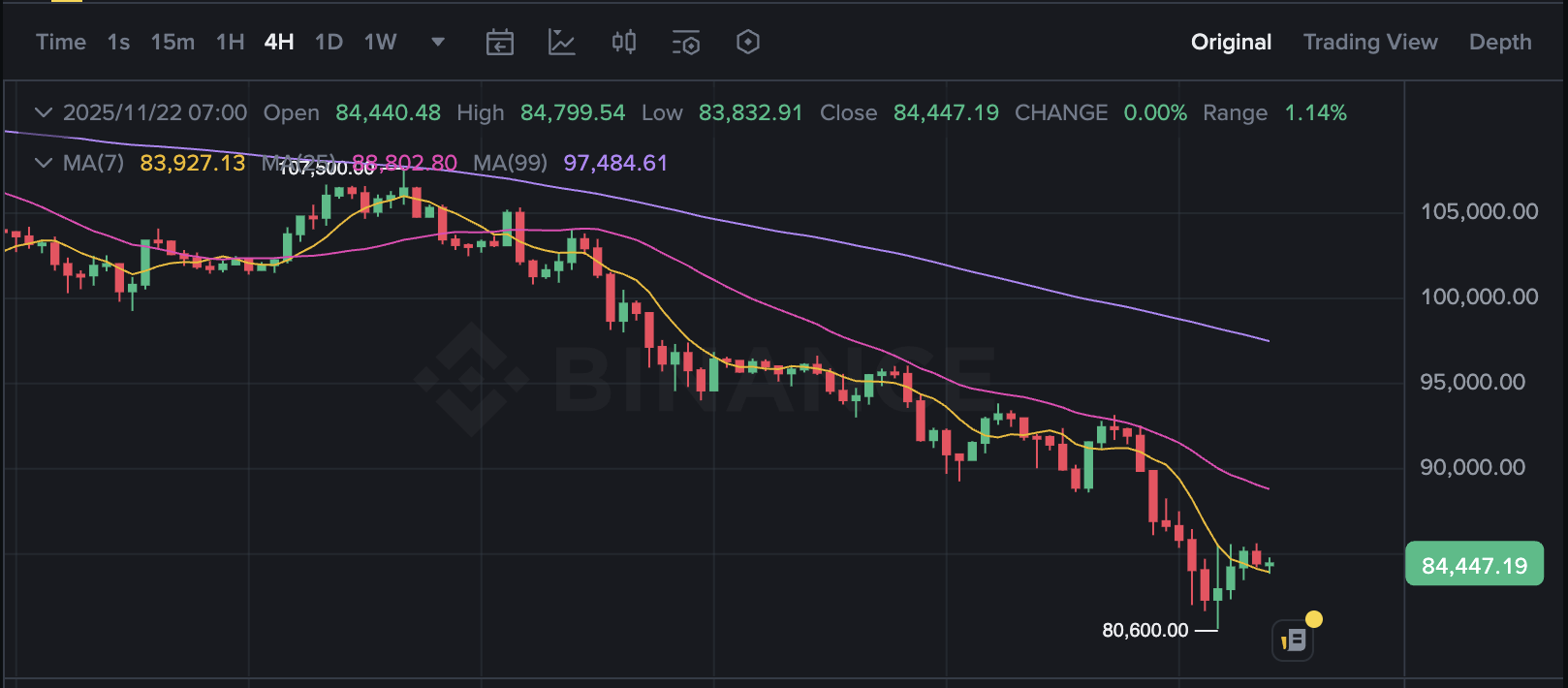With the increasing volatility in recent days, Bitcoin  $82,845.16A sharp decline in ‘s shows that the market has gone into risk-averse mode again. The leading cryptocurrency, which fell to the level of 80 thousand dollars on Friday, began to test not only investor psychology but also the durability of corporate portfolios. Analysts state that this retreat proceeds in parallel with the wave of uncertainty in global financial markets.
$82,845.16A sharp decline in ‘s shows that the market has gone into risk-averse mode again. The leading cryptocurrency, which fell to the level of 80 thousand dollars on Friday, began to test not only investor psychology but also the durability of corporate portfolios. Analysts state that this retreat proceeds in parallel with the wave of uncertainty in global financial markets.
The Sharp Fall Trend in Bitcoin is Strengthening
According to market data, Bitcoin tested the lowest level in four months, falling to $ 80,600. This decline accelerated especially as overvaluation concerns grew and uncertainties about US interest rate cuts escalated. Since cryptocurrencies have long been considered an indicator of risk appetite, this sharp decline once again revealed how sensitive the market has become.

Bitcoin lost 12 percent on a weekly basis. However, the strong rise seen throughout the year reached a record level of over 120 thousand dollars in October. Improvements in the regulatory framework and corporate acquisitions powered this rally; However, in the current atmosphere, the profitability of these same institutions is under pressure.
The critical breaking point of the market occurred when Bitcoin fell below 100 thousand dollars. Moving towards the 80 thousand dollar band, the price fell below the cost average of many institutional investors and the loss zone in portfolios began to expand.
Shares of large companies that purchase Bitcoin have also suffered serious losses in recent months. The largest of these companies, which performed strongly in the first half of the year, has lost 61 percent of its value since July, reaching a total decrease of 40 percent since the beginning of the year.
“The pro-cyclical nature of companies managing Bitcoin treasuries is now fully visible. If it wasn’t clear enough six months ago, it’s absolutely clear today,” Brent Donnelly, president of analytics company Spectra Markets, said in a note. Donnelly emphasized that these companies are often forced to buy high and sell low, which increases balance sheet pressure.
On the other hand, evaluations made by market analysts show that this sharp retreat in Bitcoin heralds a broader risk aversion in global financial markets. It is stated that especially geopolitical tensions, volatility in bond interest rates and sales in technology stocks are also reflected in crypto.
Additionally, the decline in Bitcoin negatively affected the altcoin market. Ethereum  $2,698.71 While it fell below $ 3,000 again, Solana lost 9 percent of its value compared to last week. Selling pressure also increased in the Meme coin market; Shiba Inu and Dogecoin
$2,698.71 While it fell below $ 3,000 again, Solana lost 9 percent of its value compared to last week. Selling pressure also increased in the Meme coin market; Shiba Inu and Dogecoin  $0.139588 experienced double-digit declines. Analysts emphasize that the risk of altcoins increases exponentially during periods when Bitcoin weakens.
$0.139588 experienced double-digit declines. Analysts emphasize that the risk of altcoins increases exponentially during periods when Bitcoin weakens.
As a result, the current picture in the market shows that a new wave of volatility may be inevitable in the short term. Bitcoin’s reaction around $80,000 will determine both the strategy of institutional investors and the overall market direction in the coming weeks. For the recovery of risk appetite, it is critical that macroeconomic uncertainties decrease and a clearer view of US interest policies is formed.






